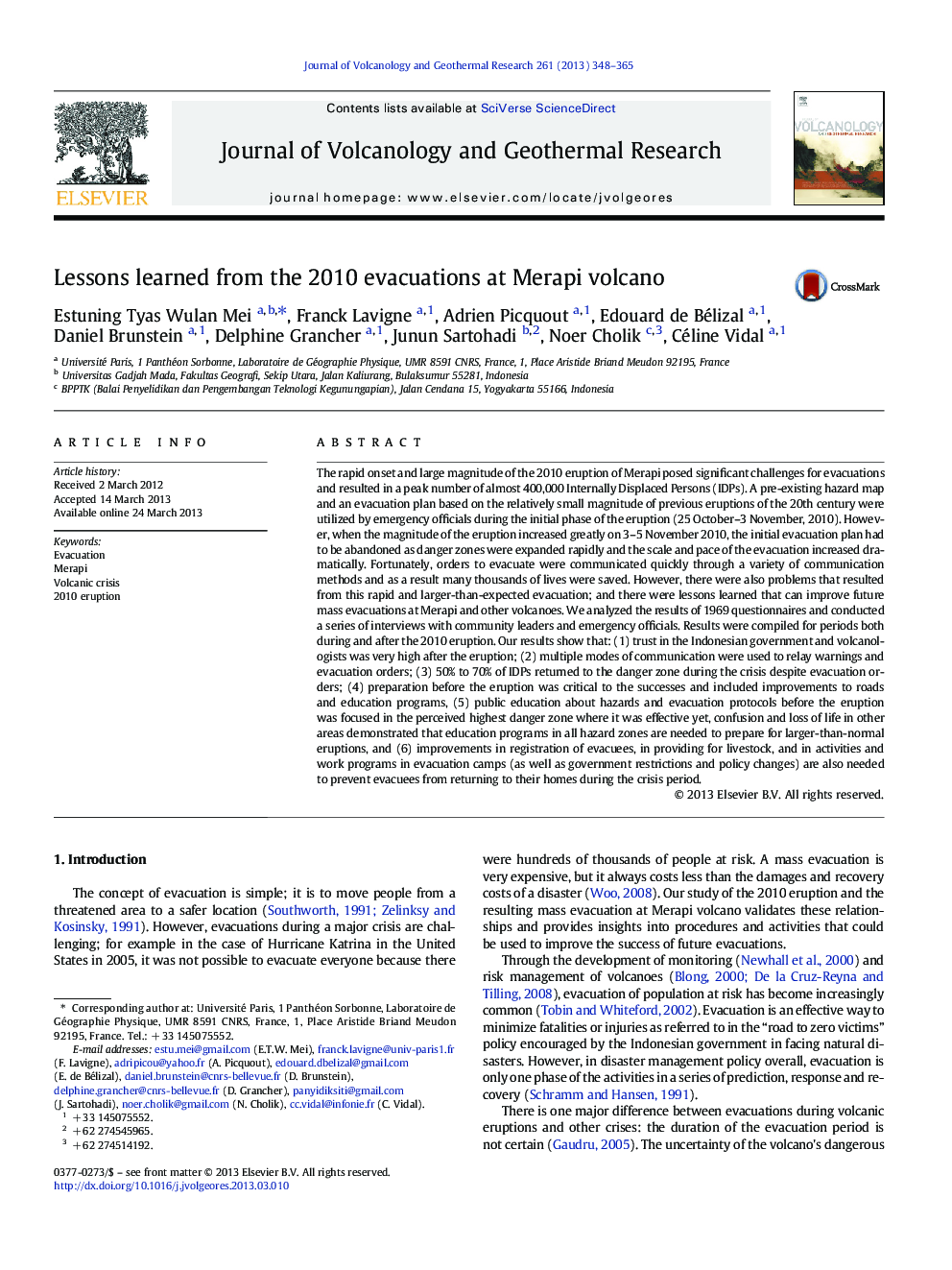| کد مقاله | کد نشریه | سال انتشار | مقاله انگلیسی | نسخه تمام متن |
|---|---|---|---|---|
| 4714702 | 1638360 | 2013 | 18 صفحه PDF | دانلود رایگان |
• Results from interviews and 1969 questionnaires are reported.
• The 2010 Merapi eruption resulted in almost 400,000 Internally Displaced Persons.
• The 2010 evacuation was a success in terms of lives saved.
• Difficulties resulted from a rapid increase in magnitude of the eruption.
• Needs for hazard education and for multiple eruption scenarios contingency planning
The rapid onset and large magnitude of the 2010 eruption of Merapi posed significant challenges for evacuations and resulted in a peak number of almost 400,000 Internally Displaced Persons (IDPs). A pre-existing hazard map and an evacuation plan based on the relatively small magnitude of previous eruptions of the 20th century were utilized by emergency officials during the initial phase of the eruption (25 October–3 November, 2010). However, when the magnitude of the eruption increased greatly on 3–5 November 2010, the initial evacuation plan had to be abandoned as danger zones were expanded rapidly and the scale and pace of the evacuation increased dramatically. Fortunately, orders to evacuate were communicated quickly through a variety of communication methods and as a result many thousands of lives were saved. However, there were also problems that resulted from this rapid and larger-than-expected evacuation; and there were lessons learned that can improve future mass evacuations at Merapi and other volcanoes. We analyzed the results of 1969 questionnaires and conducted a series of interviews with community leaders and emergency officials. Results were compiled for periods both during and after the 2010 eruption. Our results show that: (1) trust in the Indonesian government and volcanologists was very high after the eruption; (2) multiple modes of communication were used to relay warnings and evacuation orders; (3) 50% to 70% of IDPs returned to the danger zone during the crisis despite evacuation orders; (4) preparation before the eruption was critical to the successes and included improvements to roads and education programs, (5) public education about hazards and evacuation protocols before the eruption was focused in the perceived highest danger zone where it was effective yet, confusion and loss of life in other areas demonstrated that education programs in all hazard zones are needed to prepare for larger-than-normal eruptions, and (6) improvements in registration of evacuees, in providing for livestock, and in activities and work programs in evacuation camps (as well as government restrictions and policy changes) are also needed to prevent evacuees from returning to their homes during the crisis period.
Journal: Journal of Volcanology and Geothermal Research - Volume 261, 1 July 2013, Pages 348–365
